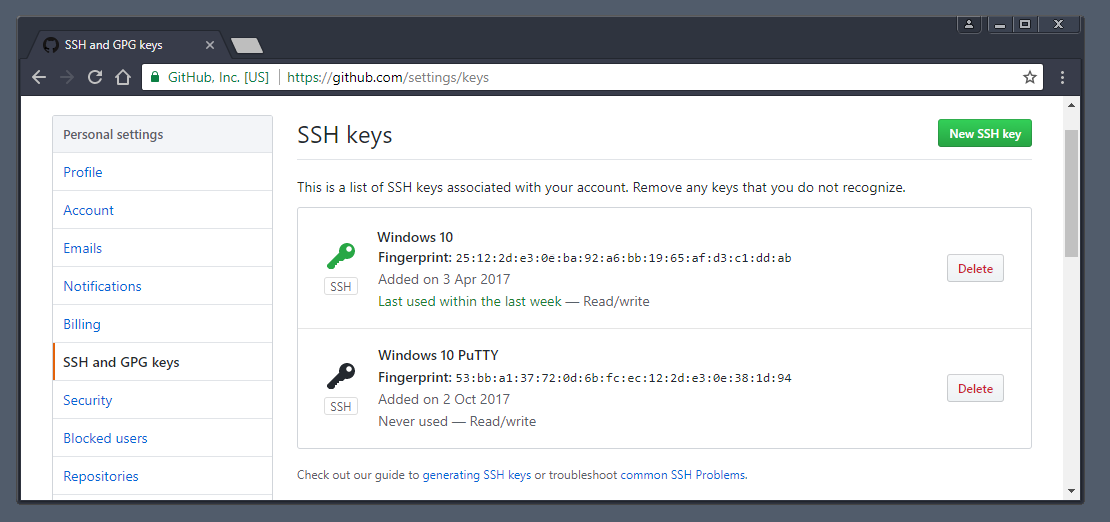It’s quite exciting topic 🙂
- Sshfs Windows 10 Github
- Sshfs Windows 7
- Sshfs Windows
- Sshfs Windows Server
- Sshfs Windows Download
- Sshfs Windows 10 Mount
Multihoming is when a host or network is connected to one or more (multiple) Internet Service Provider (ISP) or we can say it has multiple up links.
1 Open the Control Panel (icons view), and click/tap on the Sync Center icon. 2 Click/tap on the Manage offline files link on the left side of Sync Center. (see screenshot below) 3 Do step 4 (enable) or step 5 (disable) below for what you want to do. To Enable Offline Files. Install the latest version of SSHFS-Win; Open Windows Explorer and access sshfsuser@server.whatbox.ca and enter your password when prompted. If this does not work, press Win+R and run net.exe use X: sshfsuser@server.whatbox.ca instead, where X: is the drive letter you want to use for your slot. You will be prompted for your username. ExpanDrive adds cloud storage like Google Drive, Dropbox, Amazon S3, SFTP (SSH), Box, OneDrive and Sharepoint to Finder and Explorer.Don’t bother with an extra app just to move data around. ExpanDrive connects cloud storage to every application on your computer including Office 365, Photoshop, and VS. Applies To: Windows 10, Windows 8.1, Windows Server 2019, Windows Server 2016, Windows Server 2012 R2, Windows Server 2012. You can use Disk Management to mount (make a drive accessible) in a folder rather than a drive letter if you want. This makes the drive appear as just another folder.
As by know there are few RFC for multihoming approach such as from RFC7157. Try to read it for list of scenarios and also techniques. For know I just want to achieve load balancing over the multiple up-links, or at least have fail over.
At first I decided to have topology like the diagram below, two ISP connected to a single home router, the host then can connect to this router and will be assigned at least two IPv6 addresses from only one network interface.
I was able to make the packet can be routed to either OpenWrt1 or OpenWrt2 from OpenWrt based on the source address of the IPv6 but I can’t seem to do that from the Windows host. For know I’m not sure whether the cause was from OS limitation or not, indeed I’m not familiar on Windows routing. Will try later on linux OS.
So I came up with new topology, two routers each connected to a single ISP. The IPv6 connection from is Freenet6.
What you need to setup this lab environment are:
0. Warning: This guide might works on Windows only. Your IPv6 will be different from this as it is globally unique.
1. VirtualBox – https://www.virtualbox.org ( I use version 4.2.16 r86992)
2. OpenWrt image – https://dl.dropboxusercontent.com/u/60626137/OpenWrt/openwrt.vdi (this is VirtualBox image that was converted by me from Barrier Breaker x86 generic. We are going to use it as routers.
I won’t discuss on how to setup VirtualBox here in detail, please follow tutorial from http://wiki.openwrt.org/doc/howto/virtualbox.
Create 2 guest VM of OpenWrt, both have 2 Adapters one is Host Only and the other one bridged to connect to host OS for internet connection.
I highly recommend you to set serial port, later easy to SSH the guest OS from Putty.
To access from Putty, just select Serial and the serial line is Port file path that you have configured Eg: .pipeVBOXOpenWrt1
Now we are going to setup any of the image as Router 1,

Try ping 8.8.8.8 to see if there is internet connection, if have then you can proceed.
Configure our br-lan interface to have 192.168.1.1/24 network.
2 4 | #host_type <host|router> option prefixlen56 |
Save the conf and start the gw6c process by issuing /etc/init.d/gw6c start.
depending on what prefix you receive, mine is 2001:05c0:1101:4b00::1/64. We need to re -route the address and routing table from lo to br-lan interface. Change the IP accordingly.

